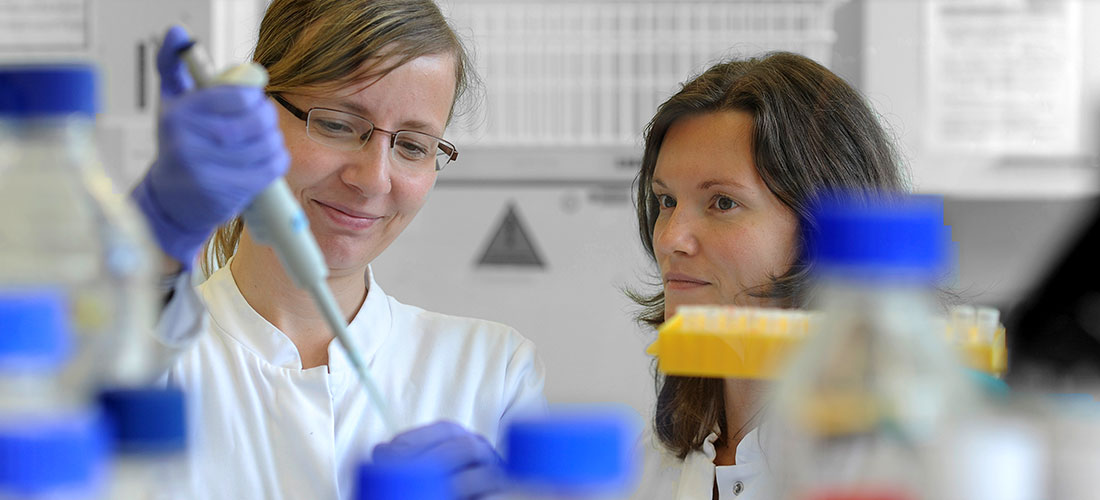Prof. Dr. rer. nat. Thomas Sommer

Intracellular Proteolysis
Max-Delbrück Center for Molecular Medicine (MDC)
Robert-Rössle-Str 10
13092 Berlin
Tel: +49 30 9406 3278
E-Mail: tsommer(at)mdc-berlin.de
https://www.mdc-berlin.de/sommer
University Education
- 1985 Diploma in Biology, FU Berlin and MPI-MG
- 1985-1988 FU Berlin and MPI for Molecular Genetics, Dr. rer. nat.
Professional Experience (selection)
- 1989-1993 Postdoctoral fellow at the Friedrich Miescher Institute of the Max-Planck-Society, Tübingen
- 1993-1998 Junior group leader at the MDC
- 1999-2008 Permanent group leader at the MDC
- 2004- Vice Scientific Director and ombudsman for doctoral researchers at the MDC
- 2009- Professor for Cellular Biochemistry at the HU Berlin
Research Fields
- i) Main field: Cell biology
- ii) Other fields: Biochemistry
- iii) Current research interest: Protein quality control and proteolysis
Scientific Scope
The endoplasmic reticulum (ER) is a cellular organelle through which a significant proportion of proteins pass on their way to their functional sites in membranes, exocytic and endocytic compartments, or the cell exterior. Far from being a passive traffic way, the ER is home to an array of molecular chaperones, which help proteins to fold and guide their maturation. Despite this support, protein biogenesis is an error-prone process. A considerable fraction of all newly synthesized polypeptides fail to attain their native conformation due to mutations, transcriptional and translational errors, folding defects, or imbalanced subunit synthesis. Mature proteins can be damaged by environmental stress conditions, such as high-energy radiation, chemical insults, or metabolic by-products. Malfunction or aggregation of defective proteins challenges the homeostasis of the ER and the cell as a whole. As a consequence, evolution has produced a protein quality control (PQC) network that operates on several levels to maintain the integrity of the ER.
The work of this group focuses on how ER homeostasis is maintained. Or, in greater detail, how quality control pathways selectively dispose aberrant proteins without jeopardizing correctly folded polypeptides. Misfolding of proteins of the ER-lumen and membrane is recognized by ubiquitin ligases anchored in the ER membrane. Proteins committed for degradation are exported from the ER lumen or membrane in a process termed protein dislocation. Subsequently, substrate molecules are ubiquitylated and degraded by cytoplasmic 26S proteasomes. This process is referred to as ER associated degradation or ERAD.
Since the ERAD pathway is conserved from yeast to mammals, we use the model organism Saccharomyces cerevisiae to investigate the fundamental mechanisms and to identify the key components of this important pathway.
For further details please visit the lab-homepage.
Most important Awards, Grants or Scientififc Achievements
- 2012 Science Award of the German Technion Society 2012
- Since 2008 Member of the Senate Committee on Collaborative Research Centers of the Deutsche Forschungsgemeinschaft (German Research Foundation)
- Since 2004 Scientific Advisor of the German-Israeli Science Foundation
- Since 2004 Associate Editor Molecular Biology of the Cell
- 2003 elected EMBO member.
- My lab is supported by several Grants from the Deutsche Forschungsgemeinschaft, such as SFB 740 and the Deutsch-Israelische Projektkoordination (DIP).
Selected References
- Friedlander, R., Jarosch, E., Urban, J., Volkwein, C., and Sommer, T. (2000) A regulatory link between ER-associated protein degradation and the unfolded protein response. Nature Cell Biology 2, 379-384.
- Jarosch, E., Taxis, C., Volkwein, C., Bordallo, J., Finley, D., Wolf D. H., and Sommer, T. (2002) Protein Dislocation from the ER Requires Polyubiquitination and the AAA-ATPase Cdc48. Nature Cell Biol. 4, 134-139.
- Neuber, O., Jarosch,E., Volkwein, C., Walter, J., and Sommer, T. (2005) Ubx2/Sel1p links the Cdc48p/p97-Complex to Endoplasmic Reticulum Associated Protein Degradation. Nature Cell Biol., 7, 993-998.
- Gauss, R., Sommer, T., and Jarosch, E. (2006) The Hrd1p ligase complex forms a linchpin between ER-lumenal substrate selection and Cdc48 recruitment. EMBO J. 25,1827-1835.
- Gauss, R., Jarosch, E., Sommer, T., and Hirsch, C. (2006) A complex of Yos9p and the HRD ligase integrates endoplasmic reticulum quality control into the degradation machinery. Nature Cell Biol., 8,849-854
- Clerc, S., Hirsch, C., Oggier, D.M., Deprez, P., Jakob, C., Sommer, T., and Aebi, M. (2009) Htm1 protein generates the N-glycan signal for glycoprotein degradation in the endoplasmic reticulum. J Cell Biol. 12, 159-172
- Hirsch, C., Gauss, R., Horn, S.C., Neuber, O., and Sommer, T. (2009) The ubiquitylation machinery of the endoplasmic reticulum. Nature 26, 453-460
- Horn, S.C., Hanna, J., Hirsch, C., Volkwein, C., Schütz, A., Heinemann, U., Sommer, T., and Jarosch, E. (2009) Usa1 functions as a scaffold of the HRD-ubiquitin ligase. Mol. Cell 36, 782-793
- Buchberger, A, Bukau, B, and Sommer, T. (2010) Protein quality control in the cytosol and the endoplasmic reticulum: brothers in arms. Mol Cell. 40, 238-252.
- Hampton, R.,Y., and Sommer, T. (2012) Finding the will and the way of ERAD substrate retrotranslocation. Curr Opin Cell Biol. Jul 30, epub ahead of print.



